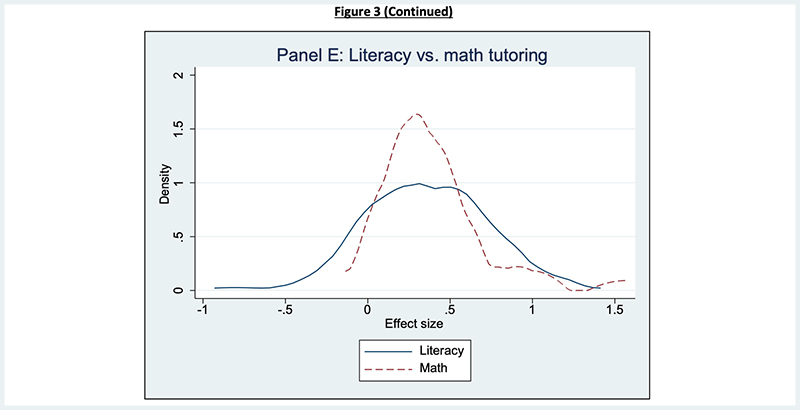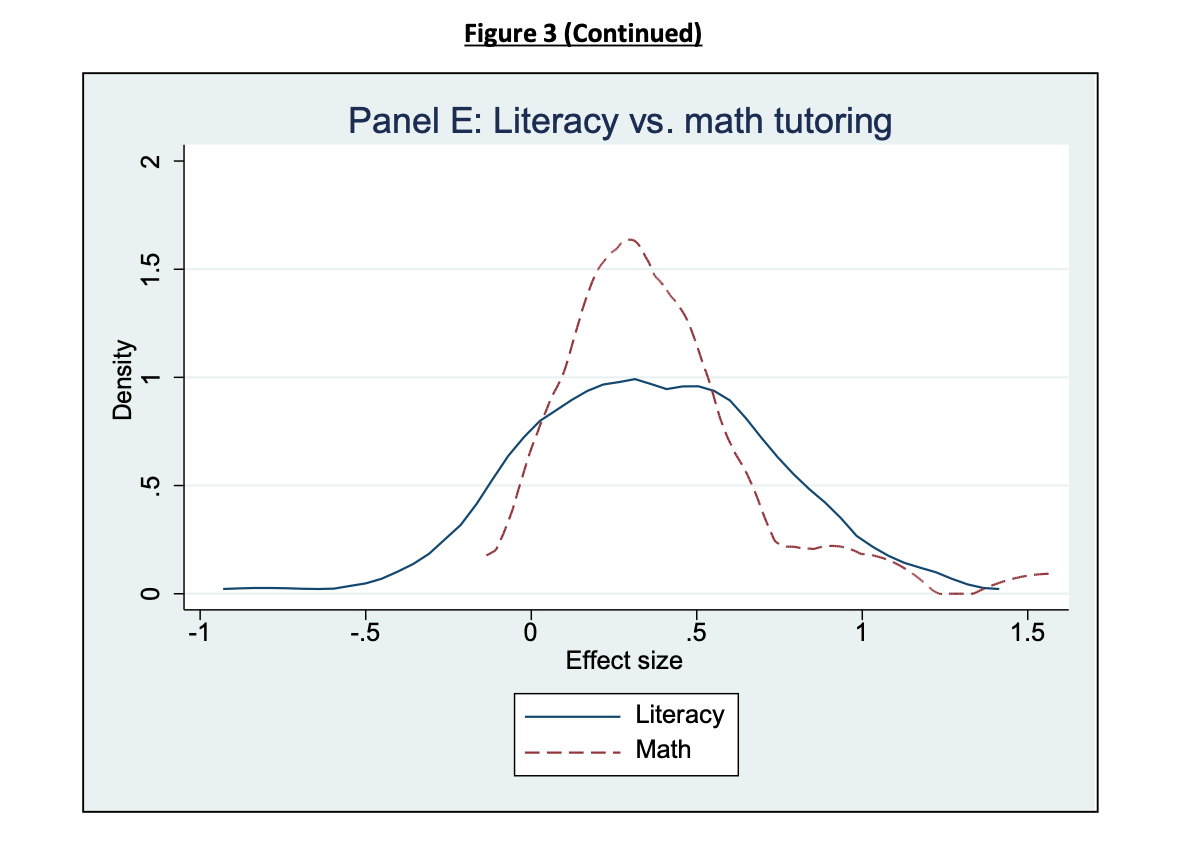Using Tutors to Combat COVID Learning Loss: New Research Shows That Even Lightly Trained Volunteers Drive Academic Gains

As students seek to cope with the threat of learning losses wreaked by COVID-19 and months-long school closures, some families have already hit upon a solution of sorts: hiring professional tutors.
The idea — commonsensical for the well-off, but prohibitively expensive for most — has engendered a storm of controversy. If a small portion of comparatively advantaged students receive supplemental learning help while millions of families struggle to even access virtual learning a few days a week, already-significant learning gaps between rich and poor could expand further. With many districts still holding off on in-person reopenings, education commentators are fretting about the inequalities that will result from a turn to private learning coaches and “pandemic pods.”
But what if the benefits of individual or small-group instruction could be offered to the kids who need it the most? It’s a question that policy experts have asked for years, often in response to research showing incredible learning growth associated with small-scale tutoring initiatives. While individual programs often demonstrate impressive results, however, the cost of bringing them to scale has tended to derail the conversation.
Now, at the same moment that policymakers are casting about for tools to get students back on track academically, new research points again to the efficacy of tutoring. In a recently circulated working paper examining dozens of experimental studies, a team of economists has found that tutoring offers the potential for transformative academic impacts. While teachers and paraprofessionals were shown to be the strongest instructors, the authors write, even lightly trained volunteers or family members have the potential to help children realize important learning gains.
Philip Oreopoulos, a public policy professor at the University of Toronto and one of the paper’s authors, told The 74 that he felt “excited … by the consistency of the results.”
“It really does seem to be the case that under different circumstances, different environments, different states, most studies point in the direction of saying that this is a really good activity to boost student performance,” he said.
The meta-analysis included results from 96 randomized controlled trials, considered by many to be the gold standard of education research. Programs served children between pre-K and high school, though the vast majority were concentrated on primary schooling. The literature was also weighted more toward initiatives focused on literacy than math.
Programs differed greatly in terms of curriculum, dosage (how often students received tutoring sessions) and learning environment (whether they were administered during the school day, in community centers after school or at home). Perhaps the most important variable was that of training and qualifications. Instruction could be provided by professional teachers; paraprofessionals, including school employees, fellows or teacher trainees; community volunteers; or parents or other home caregivers.
The team found that tutoring led by teachers and paraprofessionals was most successful at lifting students’ academic performance. Results overall were stronger for programs that focused on students in elementary school, with an interesting caveat: Reading tutoring was relatively more effective than math tutoring among students in early grades, while the opposite was true for later grades.

The programs that seemed to work best were those conducted relatively frequently during the school day, as though they were a class like any other. The authors suggested that their effectiveness might be a product of exposure more than content; outside of school, it’s simply harder to ensure that students will access the tutoring without distractions.
“Our sense is that having tutoring done in the school, especially during school time, is a way to help ensure that students actually get the tutoring,” Oreopoulos said. “That’s as opposed to having the program be more voluntary, where the students themselves selectively decide whether they want to get this help or not.”
A final consideration is the ratio of tutors to pupils. One-to-one models like Reading Recovery, a literacy program that uses classroom teachers as tutors, have shown remarkable success even when taken to scale. But Matt Kraft, an economics professor at Brown University and a prominent advocate of tutoring, told The 74 that assigning more than a handful of students to one instructor risked diluting the efficacy of the proposal.
“There’s a certain point, whether it’s four-to-one [or] five-to-one, where it moves from individualized instruction to group instruction,” Kraft said. “That’s critical, because paras and college students can, with some modicum of training, do individualized instruction well. But that’s very different from the challenges of being a teacher and doing group instruction. When you move down that line, that’s where I think skill matters tremendously.”
‘The progress can be slower than we’d like’
After months of separation from their schools and teachers, the vast majority of K-12 students could derive some benefit from either individual or small-group instruction. But that urgent necessity must coexist alongside the reality of a coronavirus resurgence that has pushed school reopenings further into the fall. A halting or scattershot reopening — New York City, the country’s largest school district, has pushed back the beginning of in-person classes to Sept. 21 — would make it almost impossible to convene regular, in-person sessions led by adults with more than cursory training in education.
Cost also presents a clear obstacle. The massive shock of the COVID recession, which has caused the economy to shrink faster than it has in decades, will impose financial shortfalls on every school district in the country. Even expecting those districts to retain their current staff and programs would be Pollyannaish in the absence of a huge infusion of federal assistance; asking them to hire thousands of new employees would be even less realistic.
One solution that has recently gained attention is the idea of a national tutoring corps, likely funded by the federal government and drawn from the ranks of college students or the unemployed. Kraft touted the idea long before millions of potential tutors found themselves out of work, arguing that policymakers could work within “the real financial limitations that districts are facing” while still providing vital help to struggling students. Even in the absence of highly experienced or credentialed instructors, he said, strong leadership and program design could generate worthwhile results.
“I think we over-focus on who’s the tutor and under-focus on what are the program structures in which tutors are working,” Kraft said. “We can reduce costs — perhaps not for the biggest return possible, but for a very meaningful return — by having more affordable tutoring models with volunteers and college students working for more affordable wages. And then we maintain efficacy by thinking about structure.”
Another possible answer to the twin dilemmas of health risk and funding would be to pair a tutoring program with proven virtual learning platforms like Khan Academy. In that arrangement, Oreopoulos explained, the tutor’s work would focus more on troubleshooting students’ questions and monitoring the progress of their online lessons, allowing them to interact with more students less frequently.
Although the research gives encouraging news, the challenges of coordination and scale are significant. Compared with districts’ capacities to act, Oreopoulos said, the need for greater services is “heartbreaking.”
“The logistics of setting this up on the kind of scale we need to to address the problem is more complicated than we initially realized. To try to set this up and deal with the operational challenges of making it easy for the students to actually receive the help, to ensure safety, to find the right match — the progress can be slower than we’d like.”
Get stories like these delivered straight to your inbox. Sign up for The 74 Newsletter


